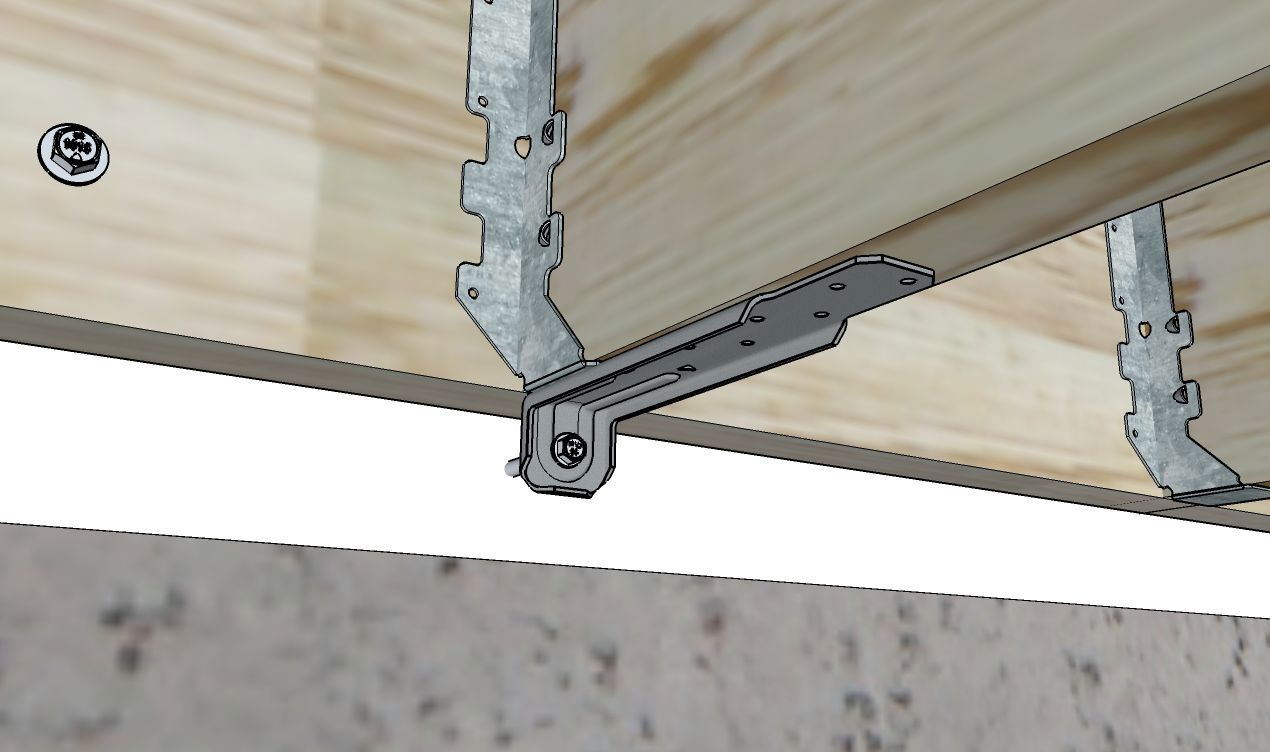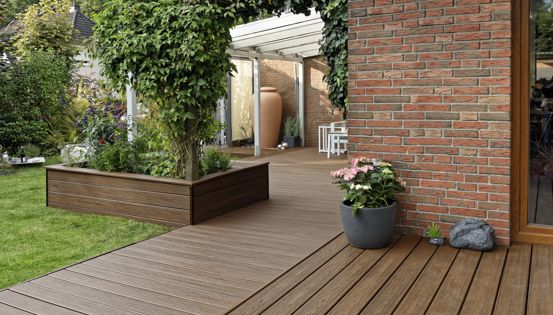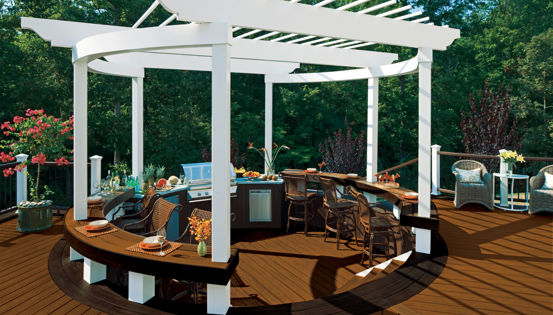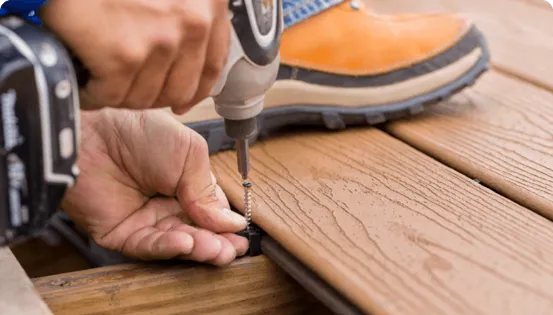Under the current code, you will most likely be required to install a positive connection to the house wall to resist lateral loads. Lateral loads can result from earthquakes or from people moving around on your deck. In severe cases, these loads can result in the ledger board being ripped from the house wall and collapsing.
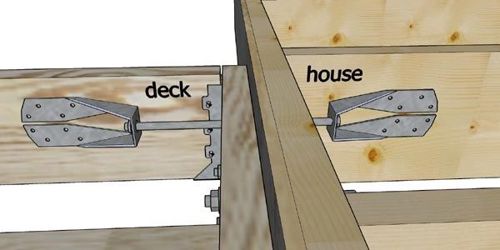
Another method involves installing hold downs to the side of a house floor joist and attaching it to another hold down installed on the side of one of your deck joists with a threaded rod. Some wood or engineered I-joist manufacturers have developed details for this type of attachment to their products. This method is much more difficult than using the DTT1Z connnection because it involves an attachment through the house wall. It is often difficult to gain access to the interior floor system of your house to make this option user-friendly.

The easiest way to ensure your ledger board connection will satisfy this requirement is to install 4 hold down devices. You will need to pre-drill and attach this connector to the solid house rim with a 3/8" diameter, fully threaded lag screw so that it has a minimum 3" penetration to the center of the top plate, studs or header. This L-shaped hold down bracket is then screwed to the bottom of the deck joist. The hold down device will have a minimum 750 lb capacity at 4 locations evenly distributed along the deck and 1 within 2' of each end of the ledger board. Always follow the manufacturer's installation instructions when installing deck hardware.
